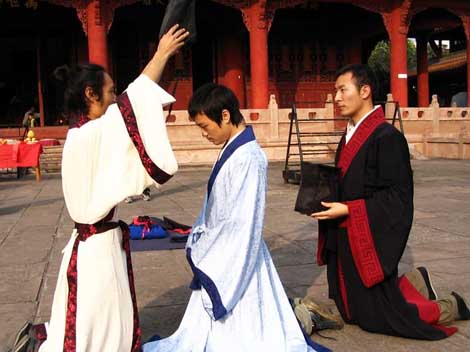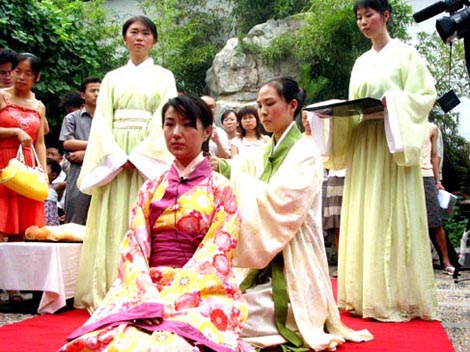The capping and hair-pinning ceremonies were coming of age rites held for young people by clan elders according to traditions. The ceremonies originated in the Zhou Dynasty over 2,000 years ago. The ceremony for men was called "the capping ceremony", which means doing hair in a bun or coil and wearing a cap; while the ceremony for women was called "the hair-pinning ceremony", meaning gathering hair into a knot and using a hairpin to hold it.

Generally, a man of 20 or a woman of 16 was regarded as an adult. These two coming of age ceremonies were held to indicate that the young person had reached the marriageable age and could participate in various activities of the clan as an adult. The ceremonies were aimed at enhancing young people's sense of responsibility.

The capping and hair-pinning ceremonies were a key component of Confucian rites, forming the "four rites" along with marriage ceremonies, mourning rites, and sacrificial rituals. The ceremonies have long been valued by Confucians. At the same time, they are part of important humanistic heritage of the Han people and played a critical role in inspiring and encouraging the healthy growth of individuals. Apart from the capping and hair-pinning ceremonies of the Han people there were lots of coming of age ceremonies of various forms among other ethnic groups such as wearing a particular type of pants, changing into a certain style of skirt, wearing tattoos and coloring the teeth etc. All types of coming of age ceremonies of modern society are derived from their ancient counterparts.





